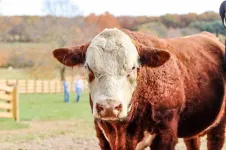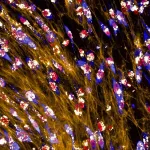(Press-News.org) House fires, road crashes and emergency rescues – they’re all part of the job for Aussie firefighters. And in such physically demanding roles, maintaining a high level of fitness and movement quality is essential.
Now, new research from health and fitness experts at the University of South Australia shows that professional firefighters have reduced movement quality as they age, which could put them at greater risk of injury.
Conducted by UniSA masters researcher, Alex Redshaw, in partnership with the South Australian Metropolitan Fire Service (MFS), the findings indicate that firefighters over the age of 50 generally have lower movement quality than their younger counterparts, and would benefit from additional functional strength training to maintain a fit and healthy workforce.
Good movement quality underpins all essential movements required to safely perform critical components of physical function, including balance, stability, and muscular strength. It is developed through functional strength training using exercises that replicate body movements and patterns seen in daily activities (such as lunging, squatting, bracing, pressing).
This is the first study on the effect of age on movement quality in Australian firefighters, and largest firefighter cohort in the world.
Statistics shows that firefighters have an injury rate more than three times that of the non-tactical workforce. It is well-established that movement quality deteriorates with age in the general population, but there is conflicting evidence in older tactical populations.
With an ageing population and more than 40% of South Australian firefighters aged over 50, the MFS was keen to understand how they could best support their members to maintain a safe and healthy career for as long as possible.
Assessing movement quality, physical activity, injury history and body mass index (BMI) among 324 South Australian MFS firefighters, researchers found that firefighters older than 50 were more likely to have poor movement quality.
It also found that firefighters with a high BMI, who participate in less than 150 minutes of physical exercise per week, and have had a musculoskeletal injury in the past 12 months, have lower movement quality, and may be at an increased risk of injury.
UniSA researcher, Dr Hunter Bennett, says exercise interventions could be offered as part of a supportive workplace health and safety program.
“Firefighters are routinely exposed to unique physiological and physical hazards, including extreme temperatures, heavy personal protective gear and unstable workspaces, all of which contribute to an increased risk of injury,” Dr Bennett says.
“Good movement quality supports well-coordinated performance within these environments, but ageing can deteriorate these functions, which may put older firefighters at risk.
“The MFS deploys a range of supports to maintain a fit and healthy workforce but is always on the lookout for additional improvements to benefit their members.
“In this study we found that older firefighters had poorer movement quality than their younger counterparts, and that this increased with age. Additionally, firefighters who did more exercise (more than five hours a week) had better movement quality.
“Knowing this, the MFS can support their members by offering specific movement quality programs to better maintain their physical capabilities as they age.”
Notes to editors:
The University of South Australia would like to thank the South Australian Metropolitan Fire Service for supporting this UniSA postgraduate research project.
The research paper can be accessed here: Redshaw, Alex & Carrick-Ranson, Graeme & Bennett, Hunter & Norton, Kevin & Walker, Anthony. (2023). Effect of Aging on Movement Quality in Australian Urban Firefighters. Journal of Strength and Conditioning Research. 37. e601-e608. 10.1519/JSC.0000000000004528
…………………………………………………………………………………………………………………………..
Media contact: Annabel Mansfield M: +61 479 182 489 E: Annabel.Mansfield@unisa.edu.au
Researcher: Dr Hunter Bennett E: Hunter.Bennett@unisa.edu.au
END
Supports help keep Aussie firefighters safe
2024-01-16
ELSE PRESS RELEASES FROM THIS DATE:
Study: New deepfake detector designed to be less biased
2024-01-16
BUFFALO, N.Y. — The image spoke for itself.
University at Buffalo computer scientist and deepfake expert Siwei Lyu created a photo collage out of the hundreds of faces that his detection algorithms had incorrectly classified as fake — and the new composition clearly had a predominantly darker skin tone.
“A detection algorithm’s accuracy should be statistically independent from factors like race,” Lyu says, “but obviously many existing algorithms, including our own, inherit a bias.”
Lyu, PhD, co-director of the UB Center for Information Integrity, and his team have now developed what they believe are the ...
Researchers find that using patients’ own blood, rather than saline, helps preserve veins in coronary bypass grafts
2024-01-16
In a collaboration between the Fralin Biomedical Research Institute at VTC and Carilion Clinic, researchers learned that by preserving large superficial leg veins intended for coronary bypass grafting in a mixture of the anticoagulant heparin and blood, rather than heparin and saline, the veins were better protected from cell and tissue damage.
Their findings, published in January in the Journal of Vascular Research, could inform surgical practices and enhance the long-term success of vein grafts in coronary bypass surgeries.
“Ultimately, we're putting healthier blood vessels ...
What if cows could talk?
2024-01-16
You may not know it, but cows share information every time they burp, moo, and chew that speaks volumes about their health and welfare.
Through the work of researchers in Virginia Tech’s College of Agriculture and Life Sciences, we may soon know more about what cows are “telling” us and be able to use that information to improve their well-being.
James Chen, an animal data sciences researcher and assistant professor in the School of Animal Sciences is using a $650,000 grant from the U.S. Department ...
Allen Fawcett named Director of the Joint Global Change Research Institute
2024-01-16
By Greg Koller
COLLEGE PARK, Md.— Allen Fawcett — an energy expert and economist who has played a leading role in formulating and coordinating U.S. climate policy — is the new director of the Joint Global Change Research Institute.
Fawcett joined the Environmental Protection Agency in 2003 and, since 2012, served as the chief of EPA’s Climate Economics Branch, which advances the science of climate economics to inform policy. From 2010 to 2011, Fawcett took leave from EPA to serve as the deputy associate director for energy ...
Parents more likely to attempt suicide in first years after child’s cancer diagnosis
2024-01-16
Parents who have a child with cancer are more likely to attempt suicide during the first years after diagnosis, according to a new study conducted by Qianwei Liu of Southern Medical University, China, and colleagues, published January 16th in the open access journal PLOS Medicine.
Receiving a cancer diagnosis for a child is an incredibly stressful and distressing experience for parents. These parents, especially mothers, face an increased risk of psychiatric disorders, but little is known about the risk of suicide. In the new study, researchers looked at the number of suicide attempts ...
Energy-starved breast cancer cells consume their surroundings for fuel
2024-01-16
New study from the University of Sheffield identifies a novel mechanism employed by breast cancer cells to survive in the challenging environment within tumours
The findings provide a new insight into a previously unknown mechanism of cancer cell survival and may offer a new target for developing therapies
The research found breast cancer cells take advantage of nutrients in the extracellular matrix in times of nutrient starvation
Energy starved breast cancer cells ingest and consume their surroundings to overcome starvation, a new study has found.
The research, conducted by scientists at the University of Sheffield and published today (Tuesday 16 January ...
How did free wi-fi help unlock Hanoi wet markets’ mysteries?
2024-01-16
Researchers at the Alliance of Bioversity International and CIAT and their collaborators have been working on how to harness the power of the estimated 549 million Wifi hotspots worldwide, resulting in a project that used anonymized data gathered from free Wi-Fi to better understand the impact of COVID-19 on Hanoi’s wet markets during the first stage of the Covid-19 pandemic.
In the paper “Using free Wi-Fi to assess impact of COVID-19 pandemic on traditional wet markets in Hanoi” published in December 2023 in the scientific journal Food Security, the researchers analyzed and interpreted mobile device tracking ...
Smooth operation of future nuclear fusion facilities is a matter of control
2024-01-16
As researchers around the world work to develop viable alternatives to fossil fuels, the prospect of nuclear fusion—harnessing the same energy-generating reactions that power the sun—has grown increasingly attractive to private equity firms.
In 2022, the U.S. Department of Energy launched a partnership with investors in the private sector to accelerate the development of fusion energy, in part through the development of a fusion pilot plant, or FPP, in the United States.
The FPP and ITER—the world’s largest nuclear fusion reactor, currently being ...
Microfossils shed light on the long fossil record of euglenoids
2024-01-16
Hiding in the shadows, euglenoids are a fascinating group of single-celled protists that are neither plant nor animal. Plants photosynthesize, and animals eat. Euglenoids do both. Spiraling along the murky bottoms of shallow fresh-water ponds with their long flagella, they eat organic goop, while also using their chloroplasts to convert CO2 and water with light into sugars. Because of this in-between status, euglenoids have been placed close to the very base of the eukaryotic branch on the tree-of-life that includes ...
Amnesia caused by head injury reversed in early mouse study
2024-01-16
WASHINGTON - A mouse study designed to shed light on memory loss in people who experience repeated head impacts, such as athletes, suggests the condition could potentially be reversed. The research in mice finds that amnesia and poor memory following head injury is due to inadequate reactivation of neurons involved in forming memories.
The study, conducted by researchers at Georgetown University Medical Center in collaboration with Trinity College Dublin, Ireland, is reported January 16, 2024, in the Journal of Neuroscience.
Importantly for diagnostic and treatment purposes, the researchers found that the memory loss attributed to head injury was not a permanent pathological event driven by ...






